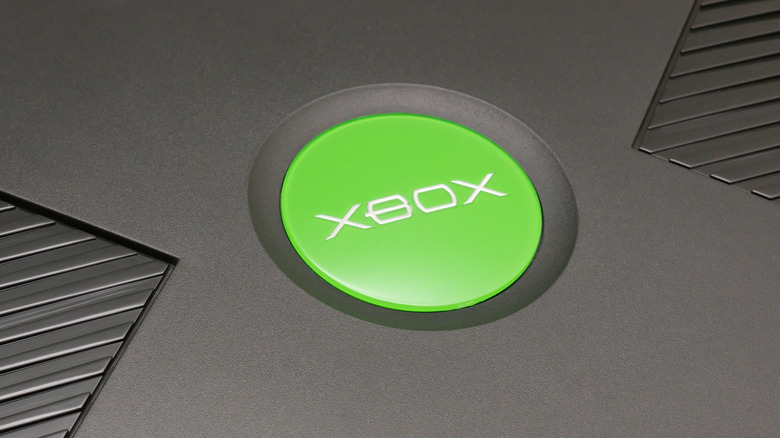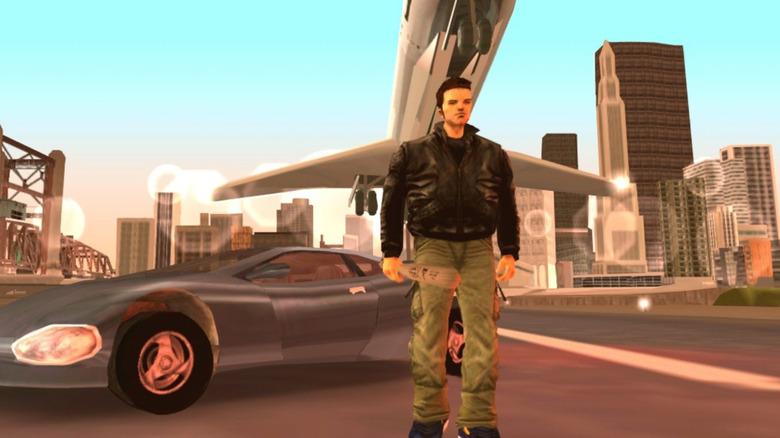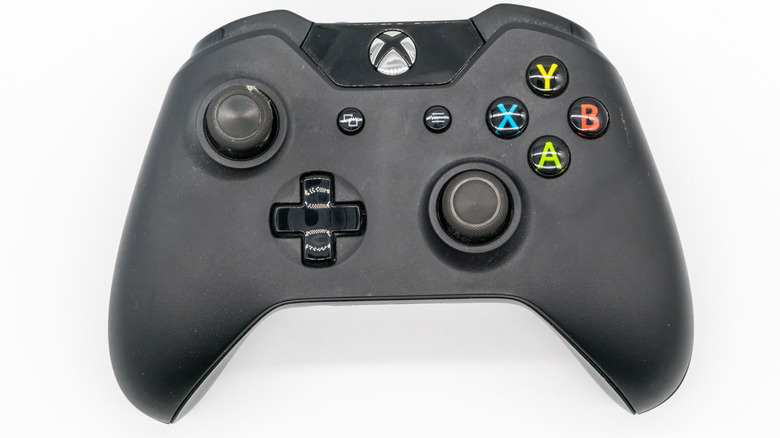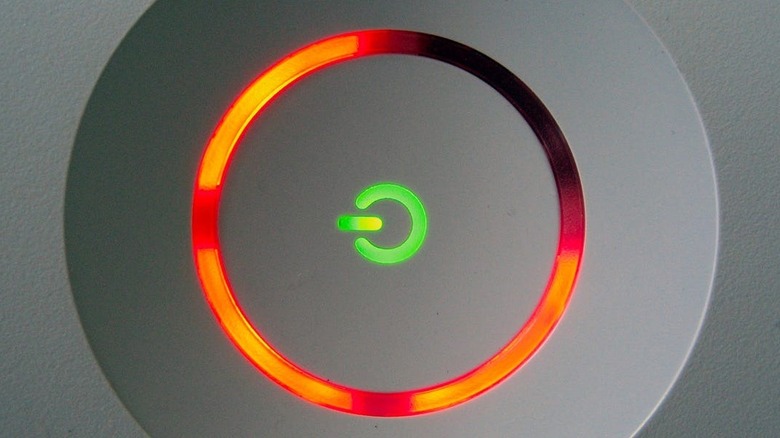The Most Surprising Reveals From The Xbox Documentary Power On
At the turn of the millennium, the world of gaming was changing at a rapid rate. Console gaming had begun to overtake PC gaming, with Sony and Nintendo leading the charge in pushing the video game medium to the absolute limit and beyond. To this point, Microsoft had mostly stayed away from the gaming realm. After seeing other companies' success, a young team within Microsoft urged the higher-ups of the company to make the foray into console gaming and cut out a niche of its own.
This project would eventually spawn the console known as Xbox, which quickly gained popularity and cut into the Sony-Nintendo duopoly of console gaming with its release in 2001. After years of success, Microsoft released a six-part documentary called "Power On" to celebrate the 20th anniversary of the original Xbox's release. The documentary features several figureheads from within Microsoft and the video game industry talking about the trials and tribulations of developing the Xbox concept and maintaining popularity in a highly competitive market.
Several revelations regarding the creation of the Xbox, as well as the issues associated with it, were revealed as part of "Power On." And some of it was quite surprising.
Xbox passed on Grand Theft Auto 3 being a launch title
Upon creating a new console, Microsoft sought out developers that would create games exclusively for the Xbox and help give it an early boost against competitors like the PlayStation 2. Some of these early partnerships included companies like Oddworld Inhabitants who created "Oddworld: Munch's Oddysee," and Bungie who created "Halo." But one company that could've been one of the console's earliest bedfellows was none other than Rockstar Games. That's right, Xbox turned down a "Grand Theft Auto" game.
In 2001, the small British-based company was looking to revive their old "Grand Theft Auto" series and bring it to the 3D era of gaming, and were looking for a company to invest the resources necessary to turn that dream into a reality. Upon meeting with Microsoft, however, Rockstar was turned away due to the former not thinking that their concept would have the returns to justify any such investment. Of course, this was a mistake. Rockstar's concept eventually became "Grand Theft Auto 3" which released on the PlayStation 2 in November of 2001 and became a huge hit whose impact reverberated through the entire video game industry and beyond.
In "Power On", then Xbox program manager Drew Angeloff revealed the executives within Microsoft "[didn't] think that game [would] be able to make the transition from 2D to 3D." For all the smart moves Xbox made in the lead-up to the console's launch, this wasn't one of them.
Some of the original names for the Xbox were hilarious
After the tumultuous task of getting the idea for the Xbox to be given the green light from Microsoft's higher-ups, the team had to come up with an official market name for the console, a process that was documented in the second episode of "Power On." The original codename for the project was called the "Direct X-Box" before being shortened to just "X-Box" in reference to DirectX — the graphics company that had come up with the original concept and had done most of the heavy lifting when it came to its development. Despite the urge from within DirectX to simply name the console the "Xbox," Microsoft's marketing team devised a bunch of theoretical titles for their new gaming endeavor.
As you probably expected, they were bad. Really bad. Some of the names suggested included Psyclipse, Frixion, Shock Factor, and Vybe just to name a few. Oh, and "Carpet Ride" somehow was put into contention as well. In "Power On", the team described the final meeting between the Xbox crew and Microsoft's marketing team, which presented a name that it thought would be perfect: 11x Because, you know, "it goes up to 11."
The ridiculous name was pretty much immediately shot down, prompting Microsoft to give in and allow the "Xbox" moniker to be the official market name. Fair to say that this was the correct decision.
An explanation of the 'Red Ring of Death'
The rush in getting the Xbox 360 out before the PlayStation 3 resulted in a terrible hardware issue that compromised many units within months of the Xbox's release. This failure became known colloquially as the "Red Rings of Death" due to its representation as three illuminated rings on the 360's power button.
The hardware failure is well documented in the fifth episode of "Power On," in which the Xbox team expresses its trouble in discovering the source of the issue and how to fix it. Eventually, Todd Holmdahl — Xbox's head of hardware development at the time — discovered that the hardware failure stemmed from the soldering balls that connected the console's GPU to the motherboard, which would fail after the constant changes in temperature, stemming from the turning on and off of the console over time. In order to restore good faith amongst the consumer base, Peter Moore — the head of Xbox — approached Microsoft CEO Steve Ballmer, saying that the company would need to offer complimentary repairs to any and all faulty console units, a project that could potentially cost the company well over $1 billion. To Moore's surprise, Ballmer gave him the go-ahead.
Despite the astronomical potential cost to Microsoft, Xbox went ahead with mass repairs. While it certainly cost a staggering amount of money to fix the faulty hardware, the good faith gesture further endeared players to the brand, allowing the console to enjoy continued success.




